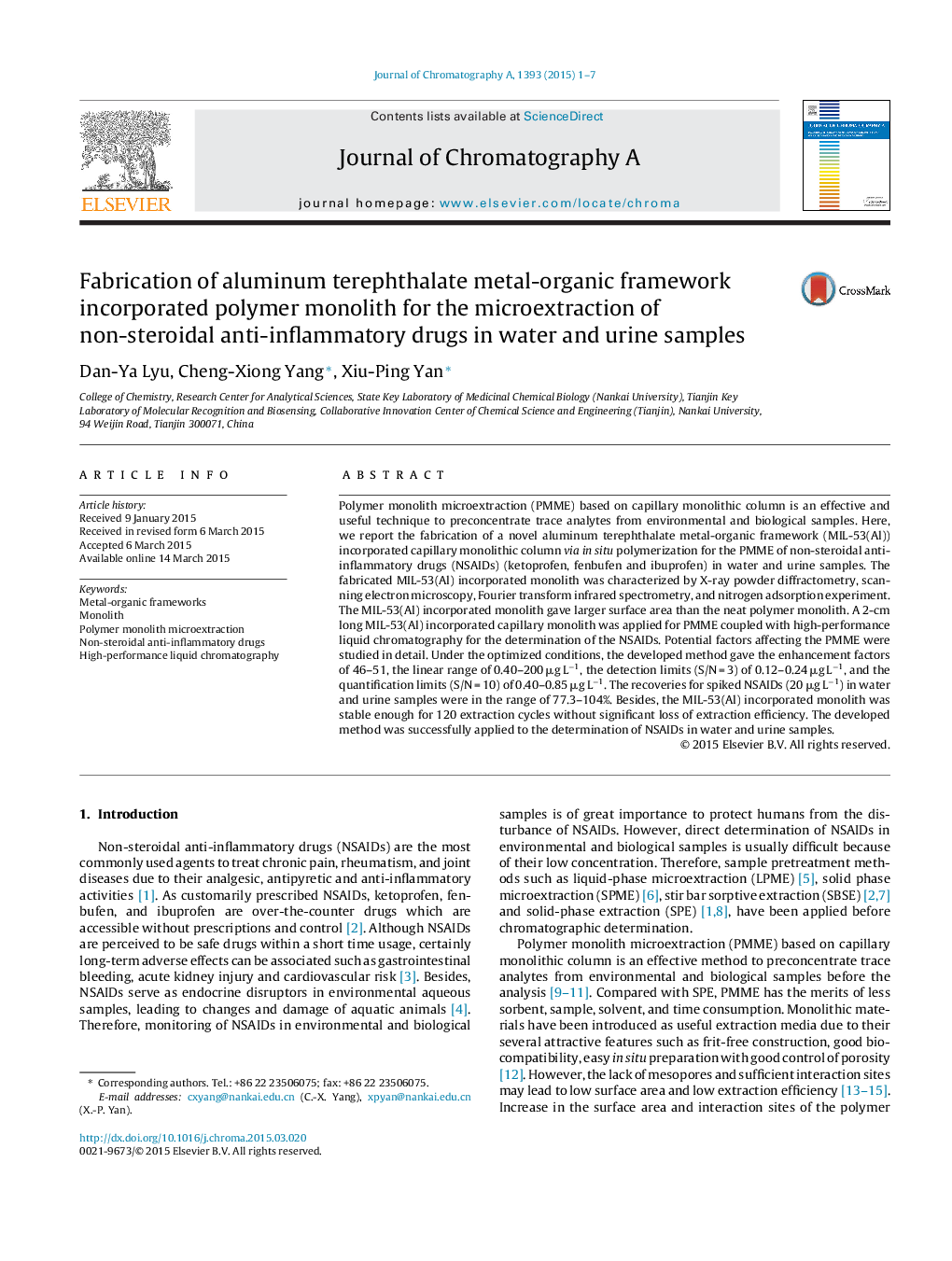| کد مقاله | کد نشریه | سال انتشار | مقاله انگلیسی | نسخه تمام متن |
|---|---|---|---|---|
| 1199442 | 1493533 | 2015 | 7 صفحه PDF | دانلود رایگان |
• A novel MIL-53(Al) incorporated polymer monolithic column was fabricated.
• The monolithic column was applied in polymer monolith microextraction.
• The method gave low detection limits for non-steroidal anti-inflammatory drugs.
Polymer monolith microextraction (PMME) based on capillary monolithic column is an effective and useful technique to preconcentrate trace analytes from environmental and biological samples. Here, we report the fabrication of a novel aluminum terephthalate metal-organic framework (MIL-53(Al)) incorporated capillary monolithic column via in situ polymerization for the PMME of non-steroidal anti-inflammatory drugs (NSAIDs) (ketoprofen, fenbufen and ibuprofen) in water and urine samples. The fabricated MIL-53(Al) incorporated monolith was characterized by X-ray powder diffractometry, scanning electron microscopy, Fourier transform infrared spectrometry, and nitrogen adsorption experiment. The MIL-53(Al) incorporated monolith gave larger surface area than the neat polymer monolith. A 2-cm long MIL-53(Al) incorporated capillary monolith was applied for PMME coupled with high-performance liquid chromatography for the determination of the NSAIDs. Potential factors affecting the PMME were studied in detail. Under the optimized conditions, the developed method gave the enhancement factors of 46–51, the linear range of 0.40–200 μg L−1, the detection limits (S/N = 3) of 0.12–0.24 μg L−1, and the quantification limits (S/N = 10) of 0.40–0.85 μg L−1. The recoveries for spiked NSAIDs (20 μg L−1) in water and urine samples were in the range of 77.3–104%. Besides, the MIL-53(Al) incorporated monolith was stable enough for 120 extraction cycles without significant loss of extraction efficiency. The developed method was successfully applied to the determination of NSAIDs in water and urine samples.
Journal: Journal of Chromatography A - Volume 1393, 8 May 2015, Pages 1–7
